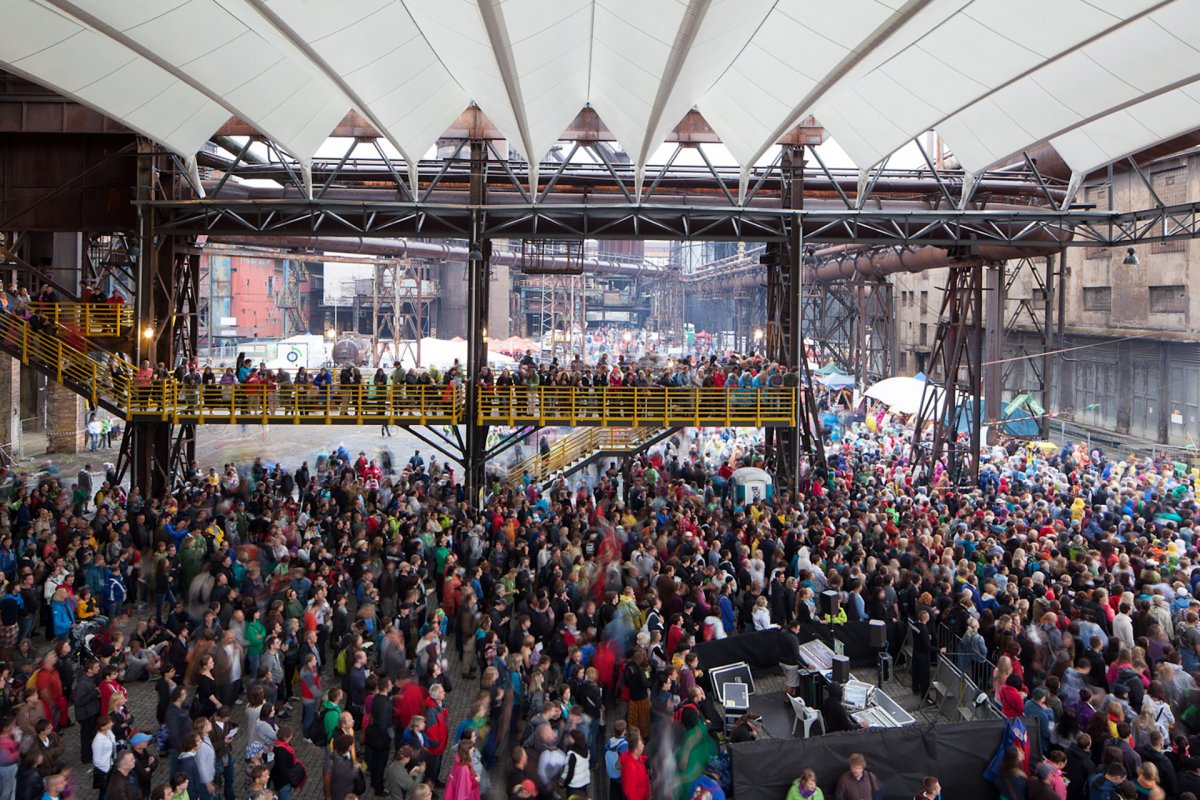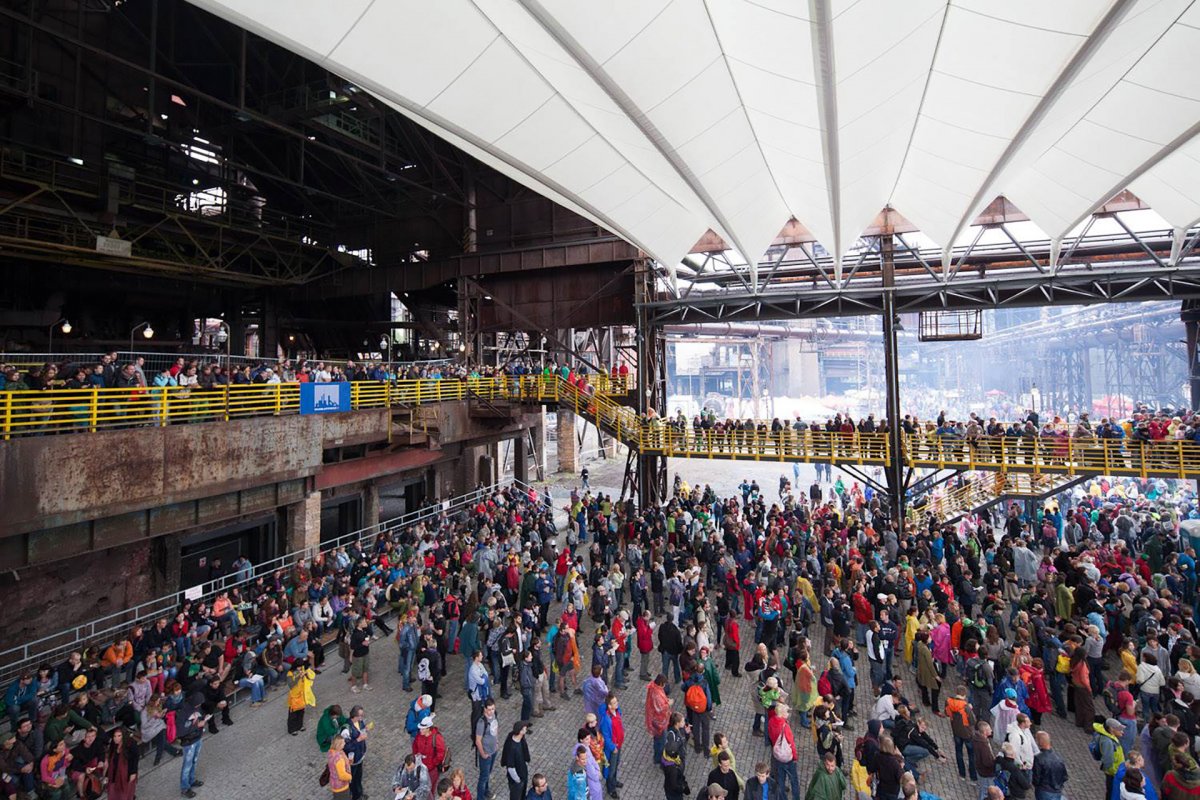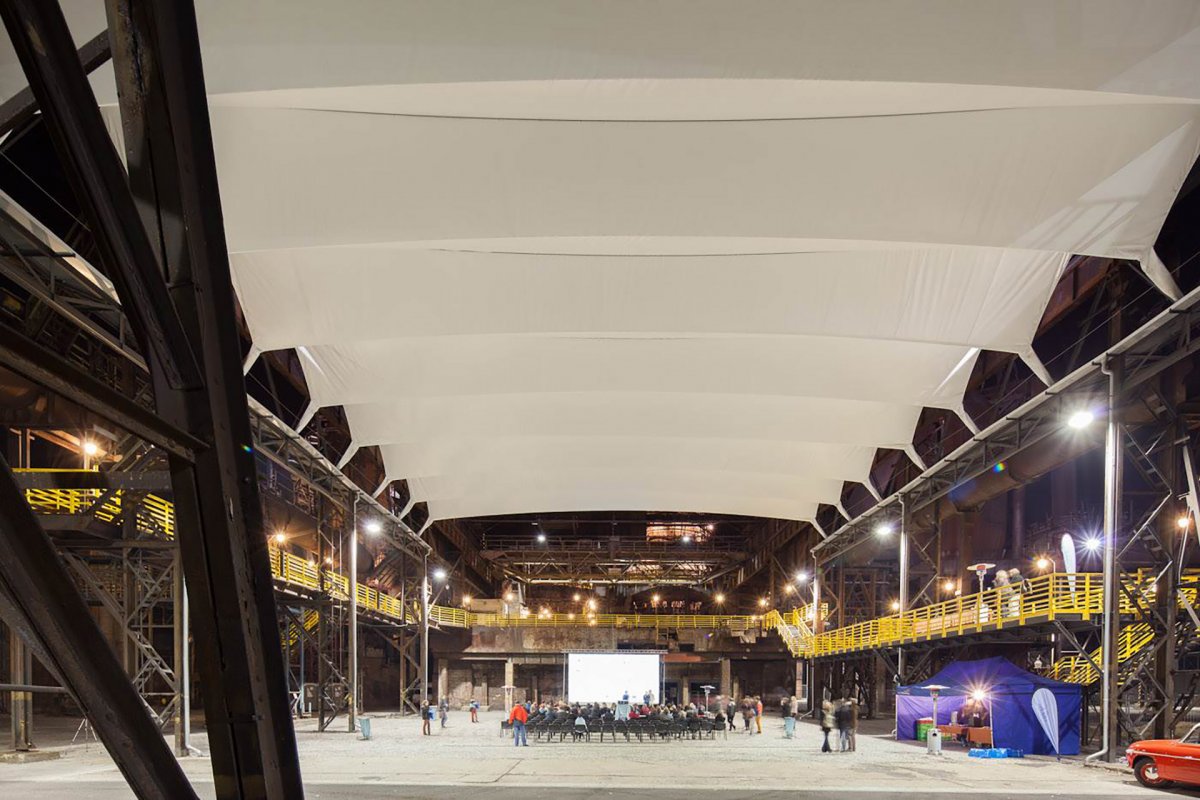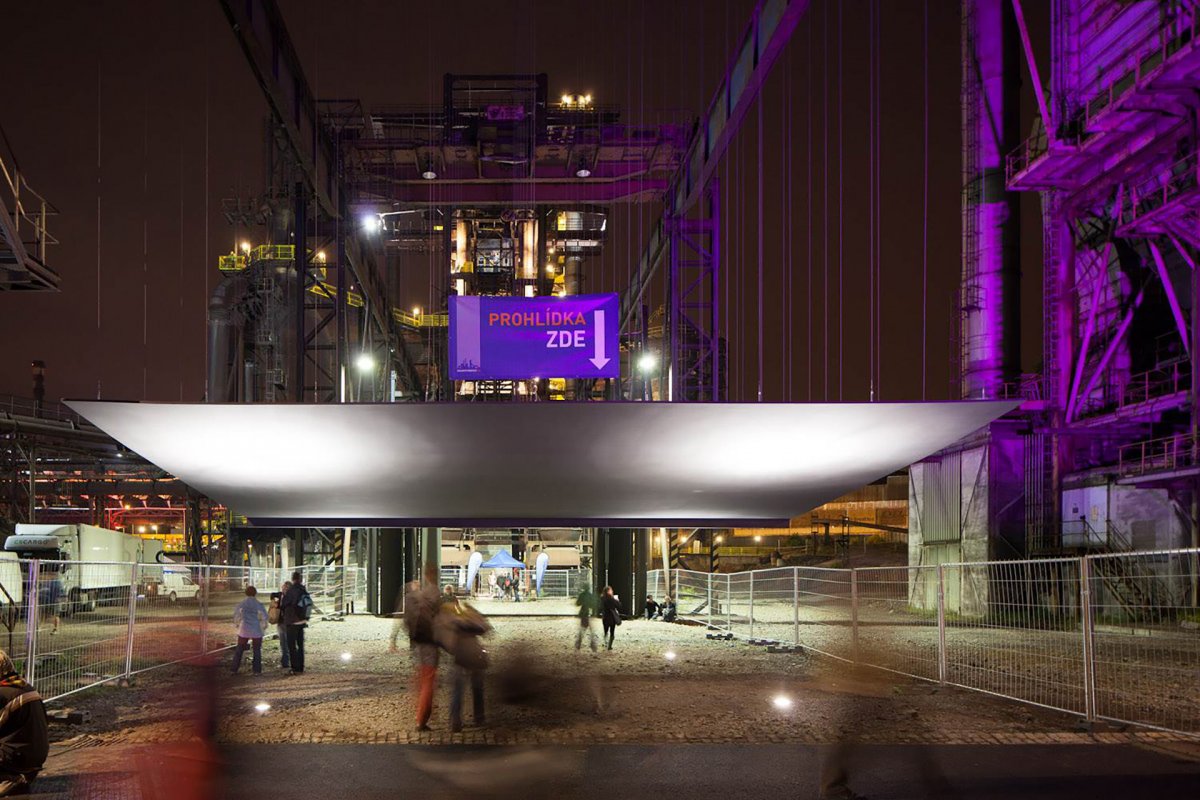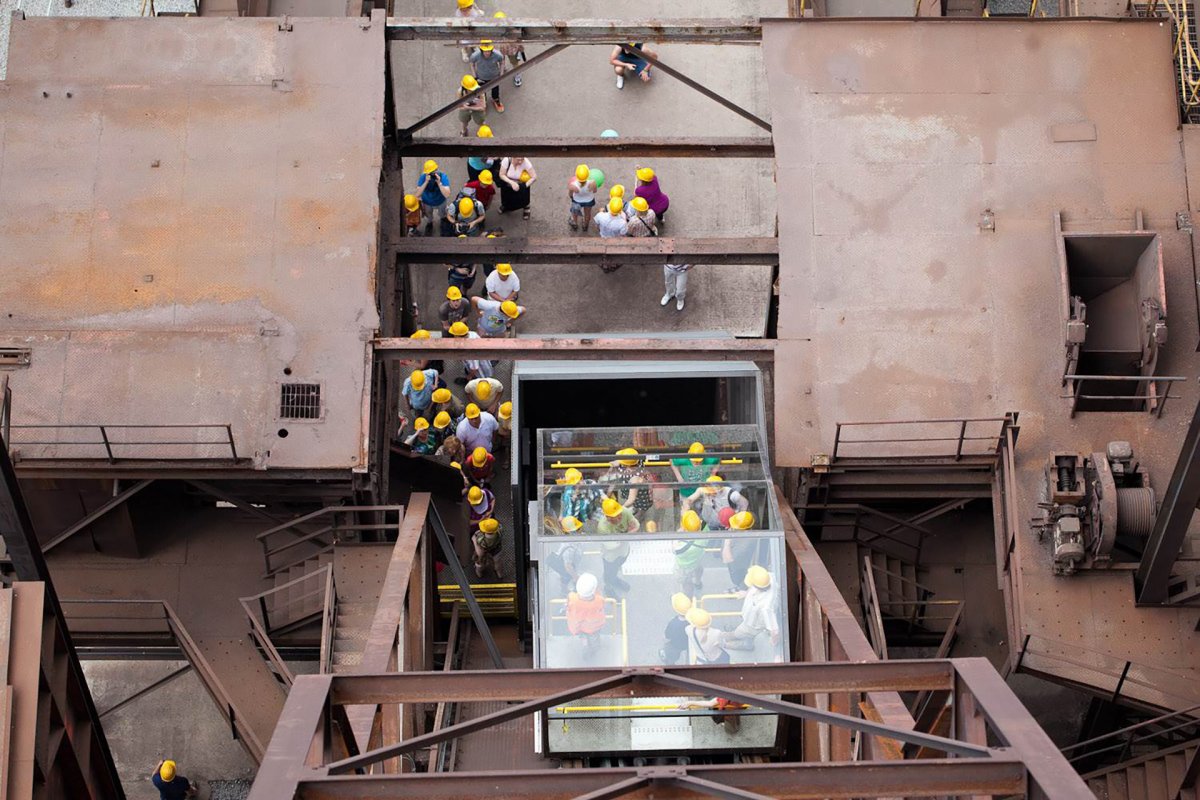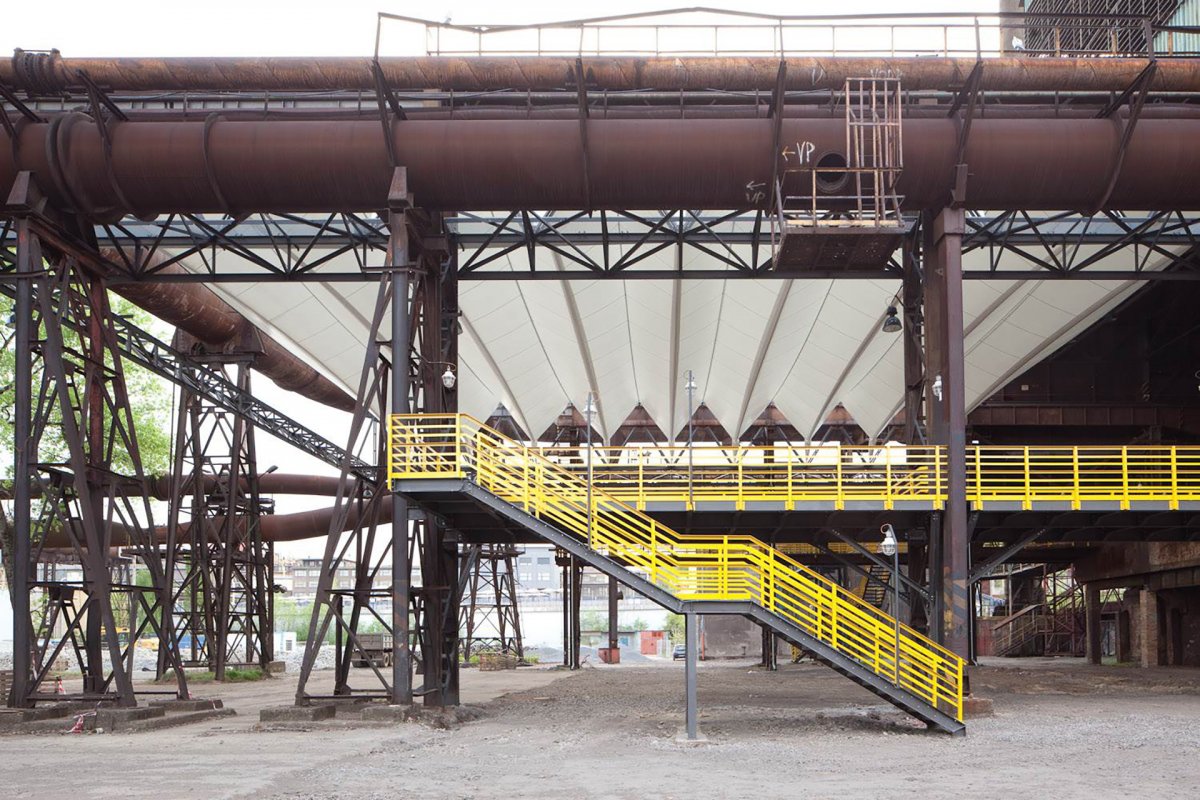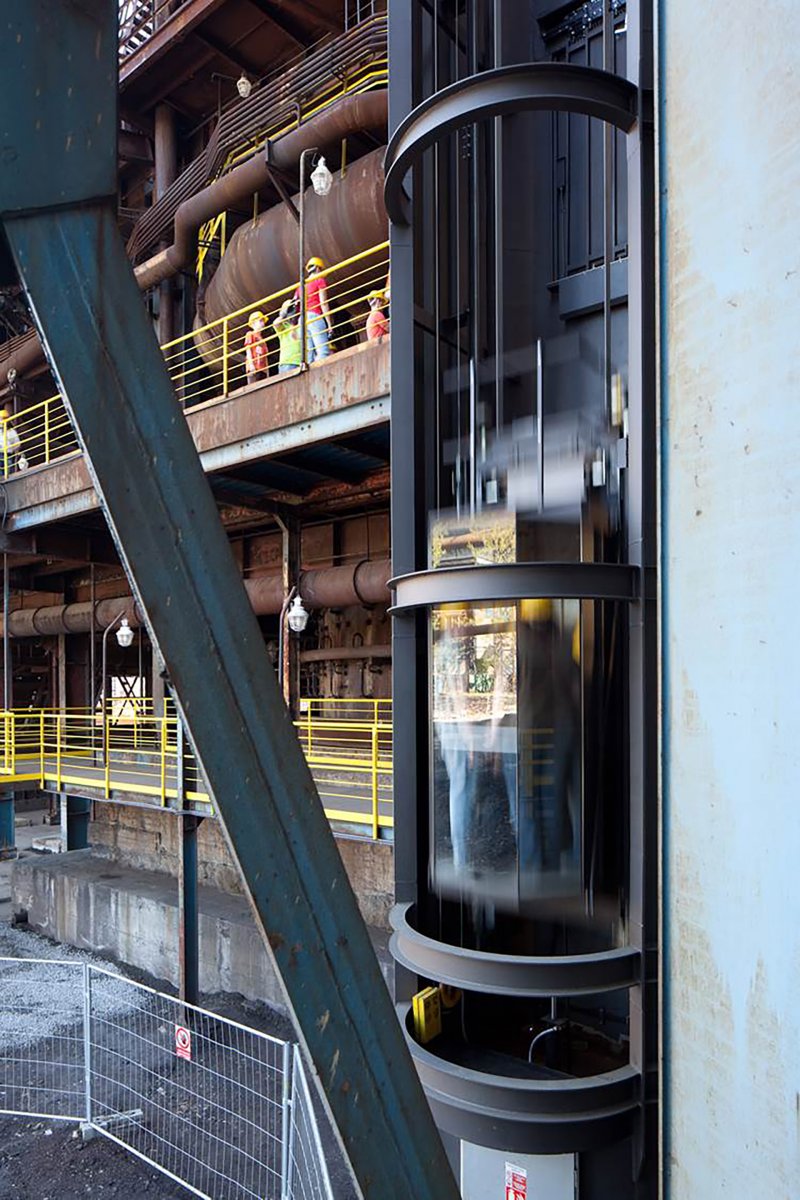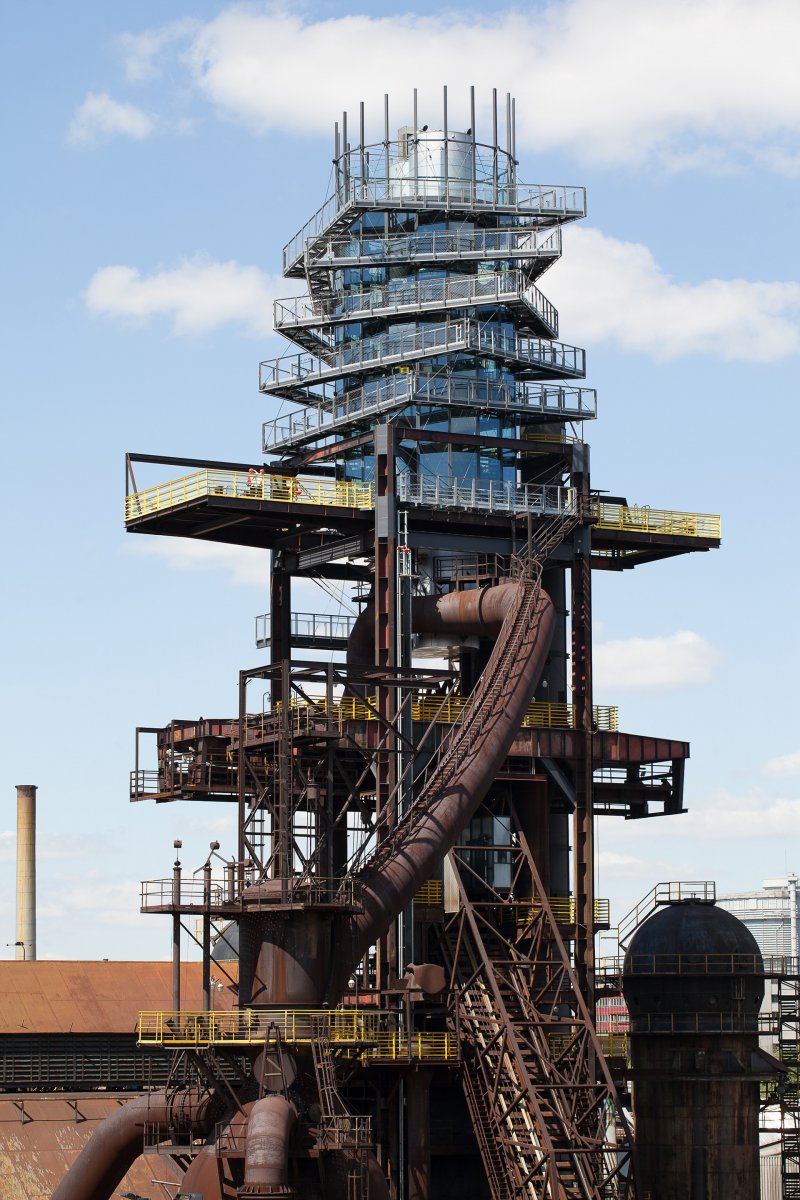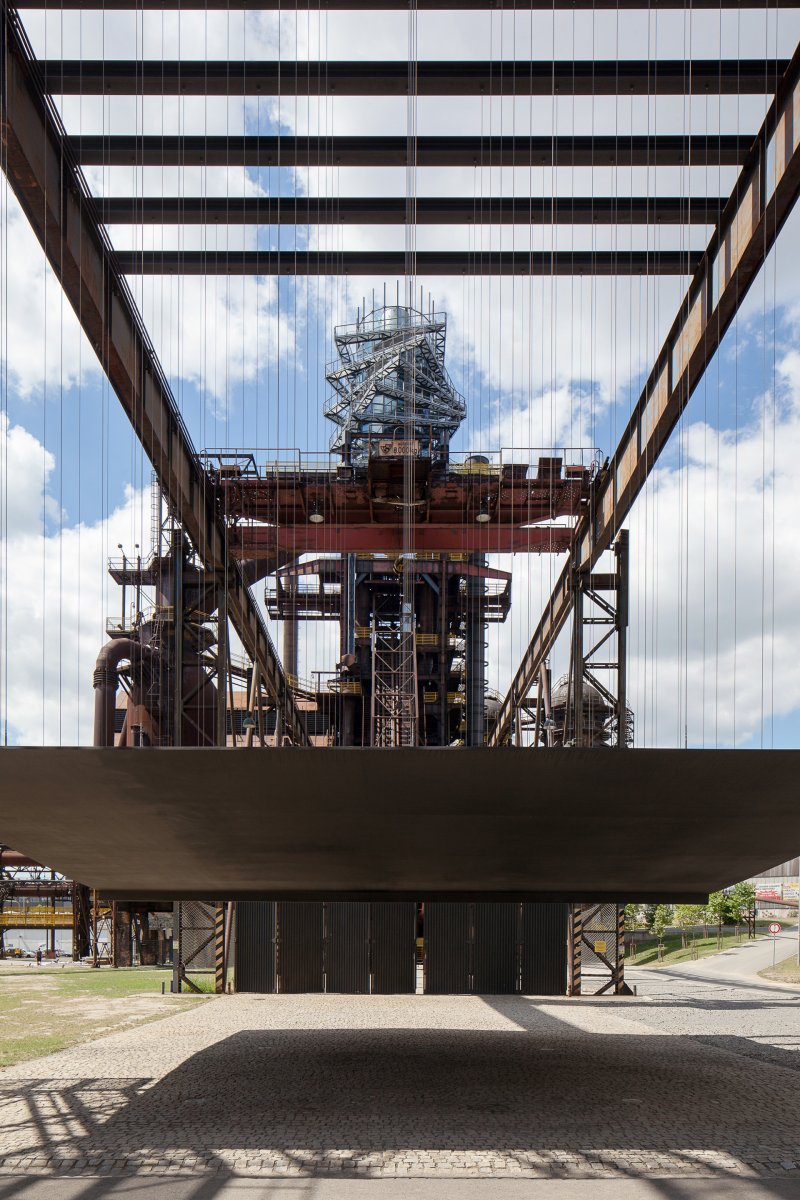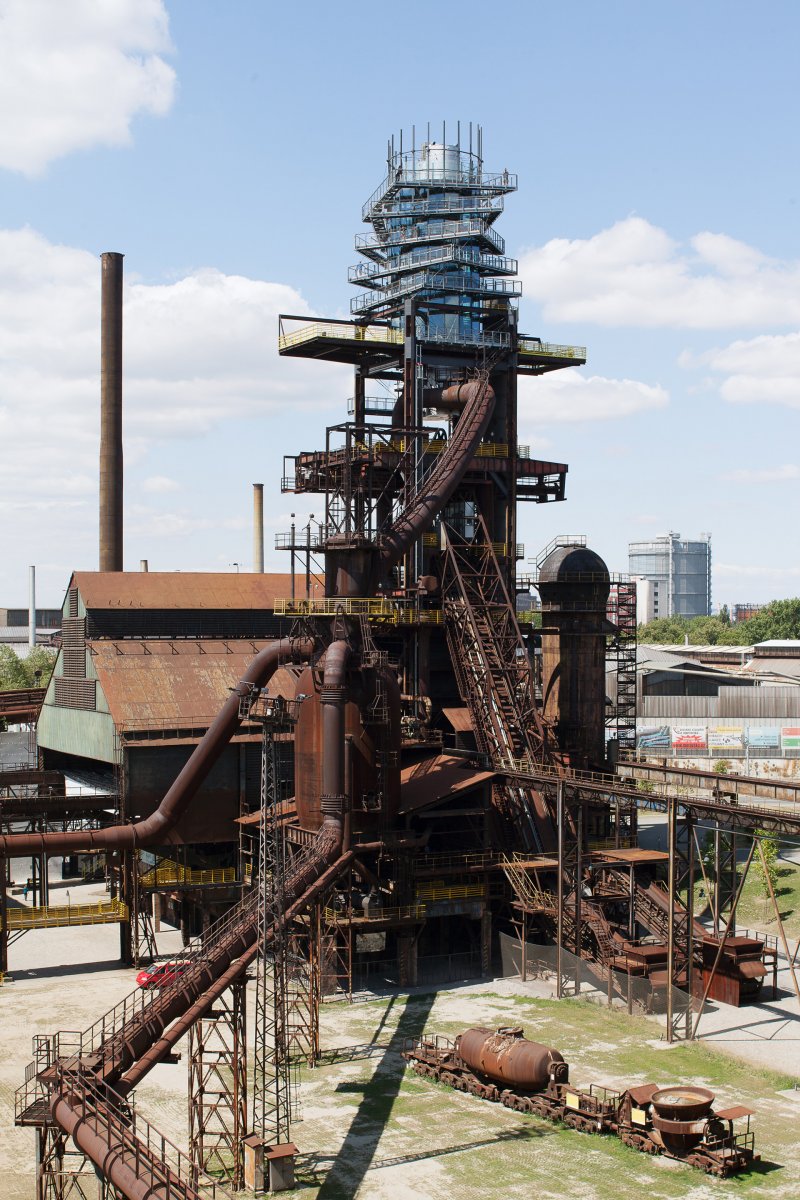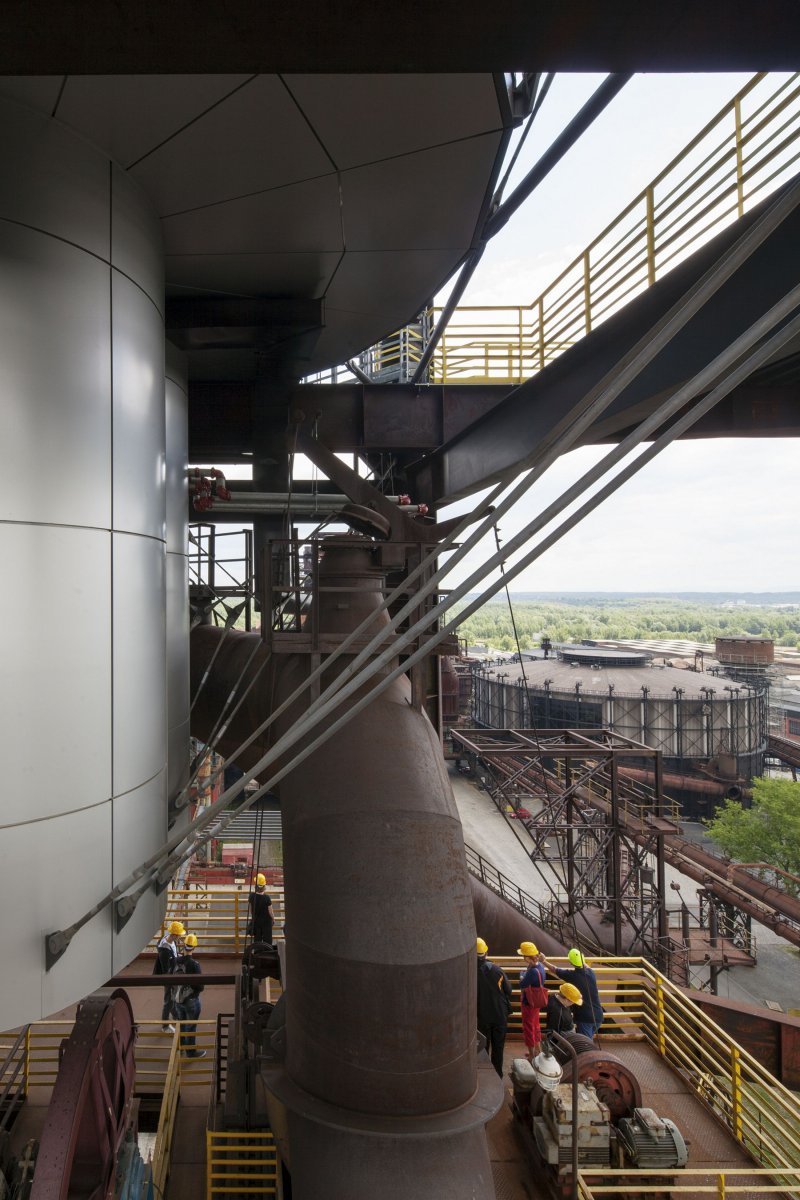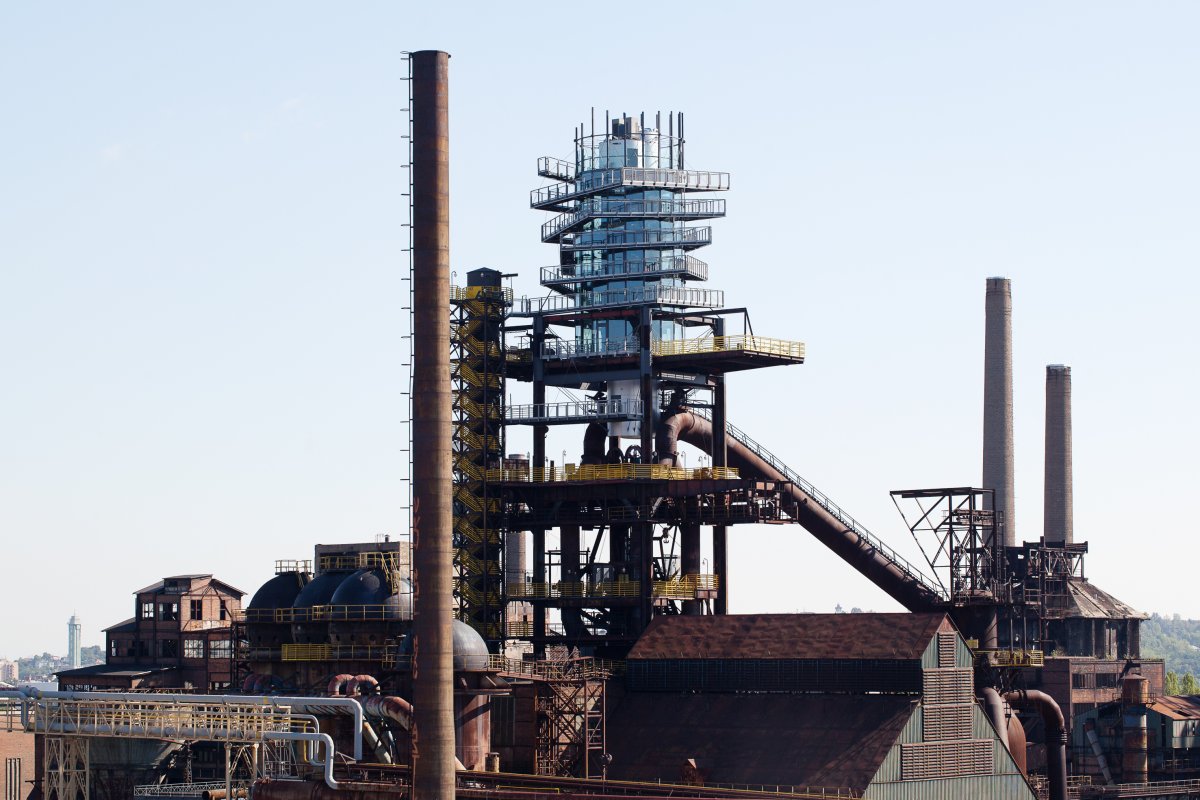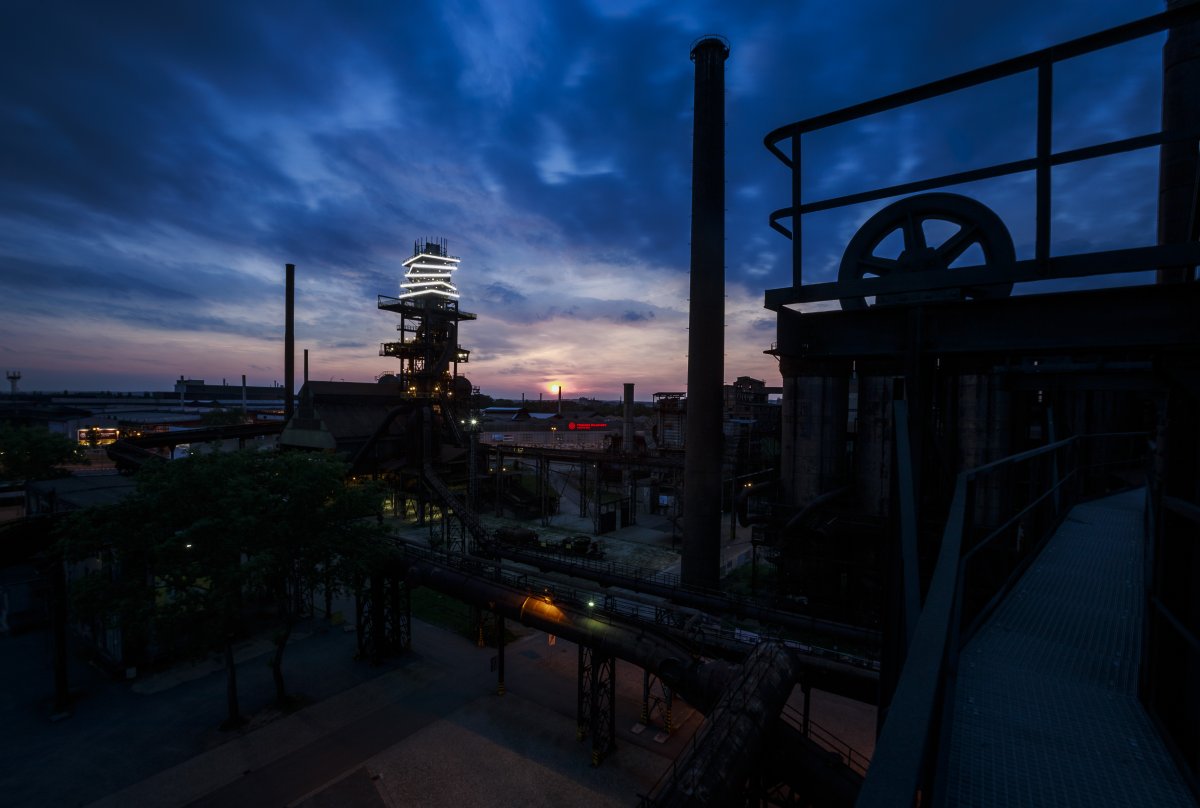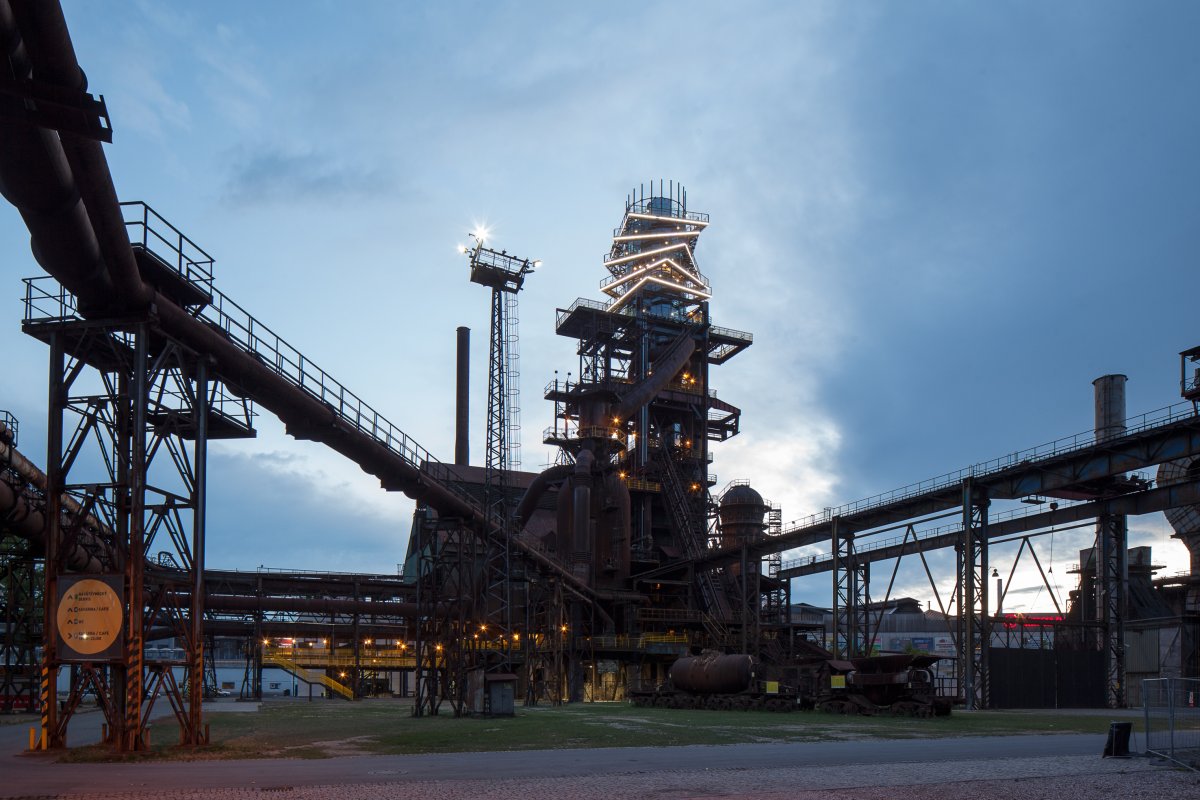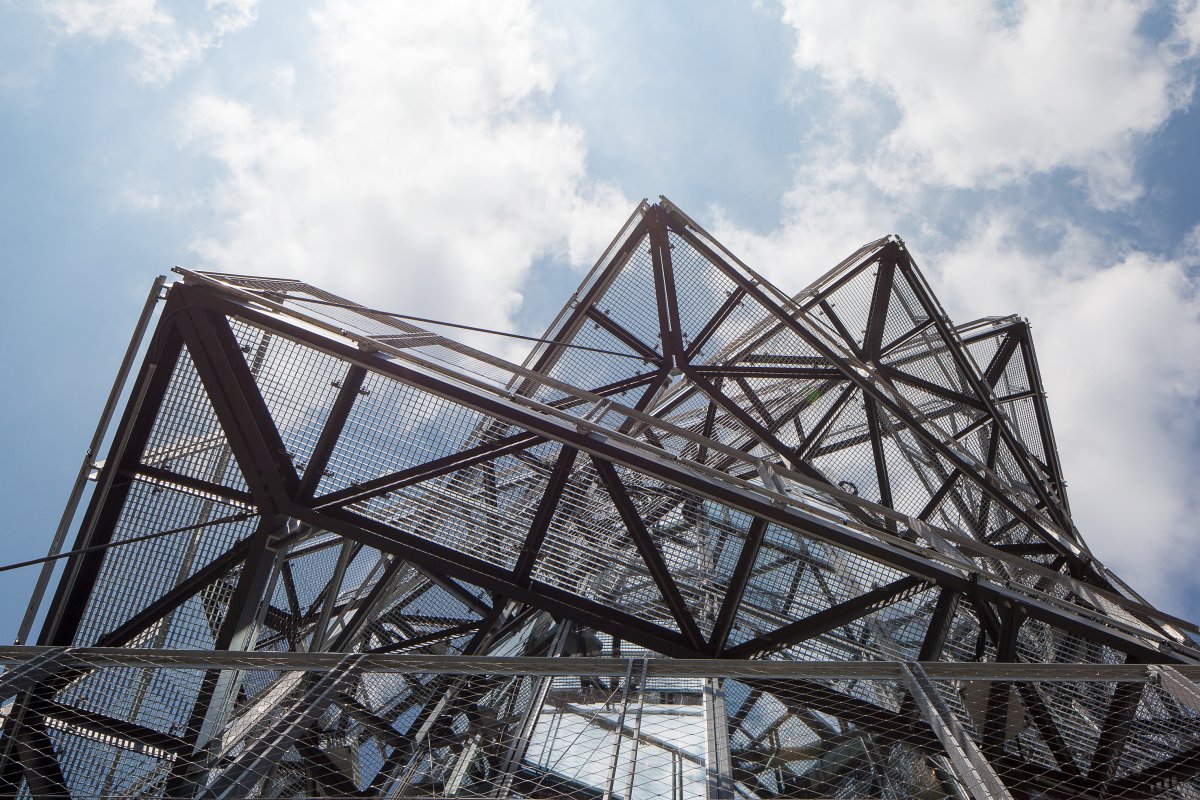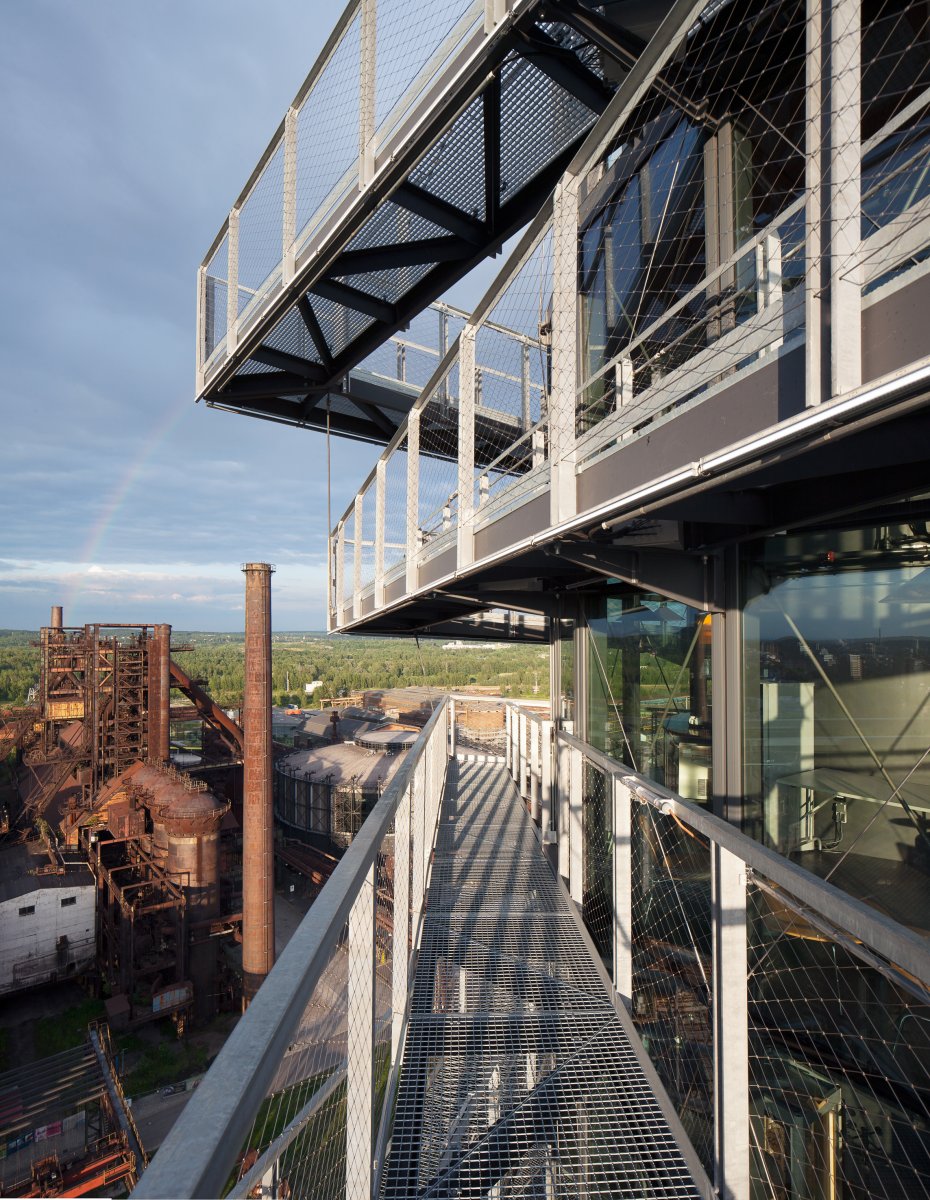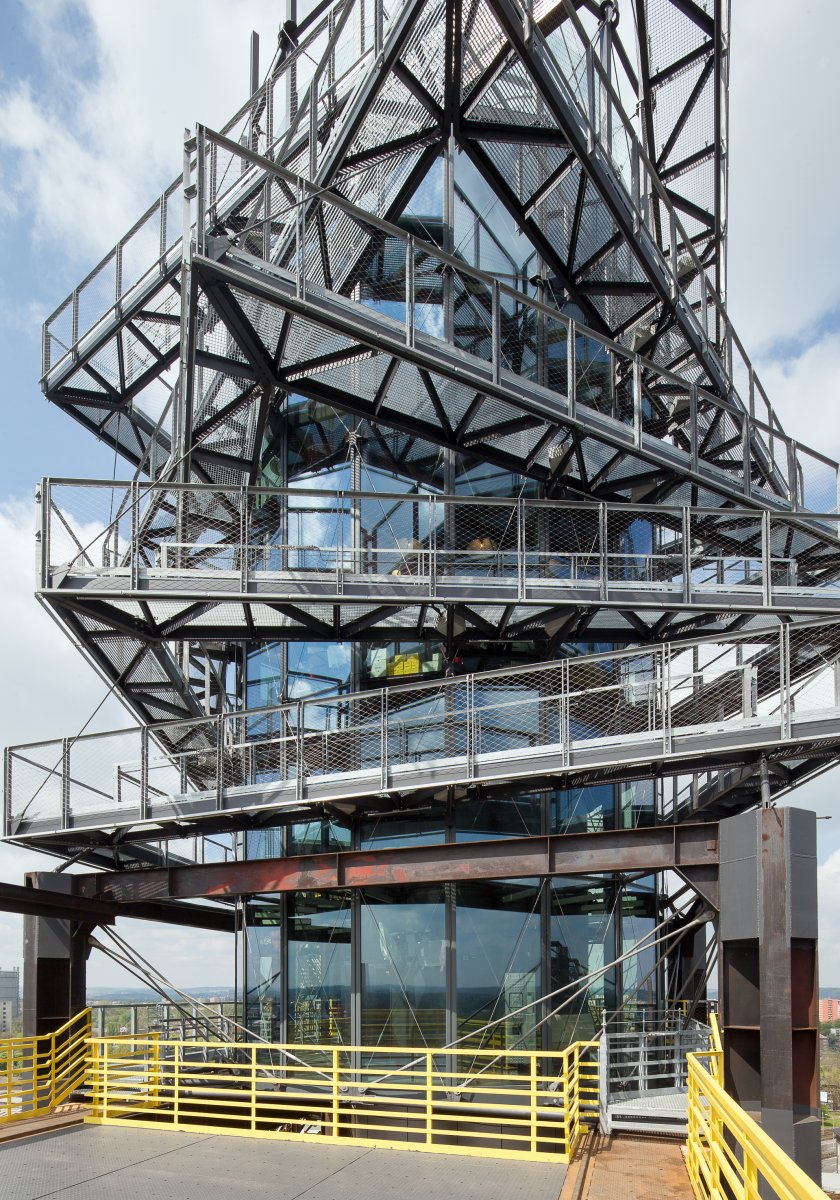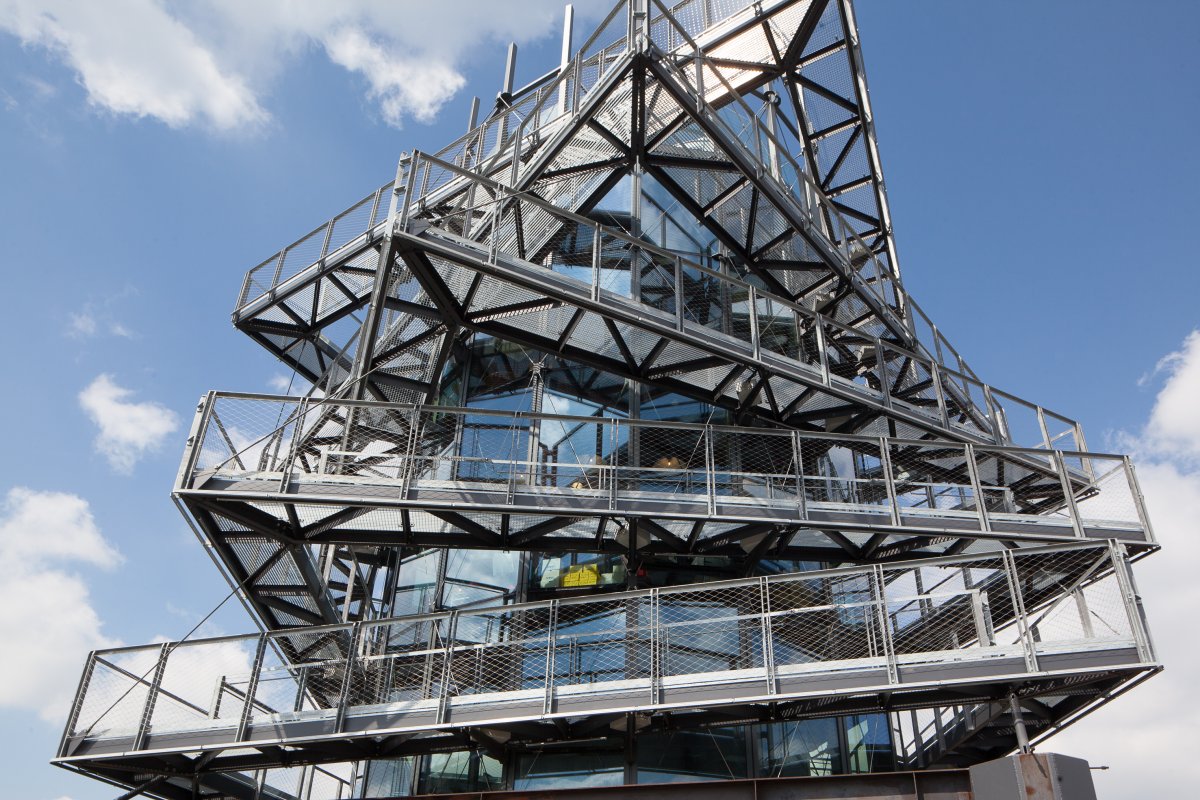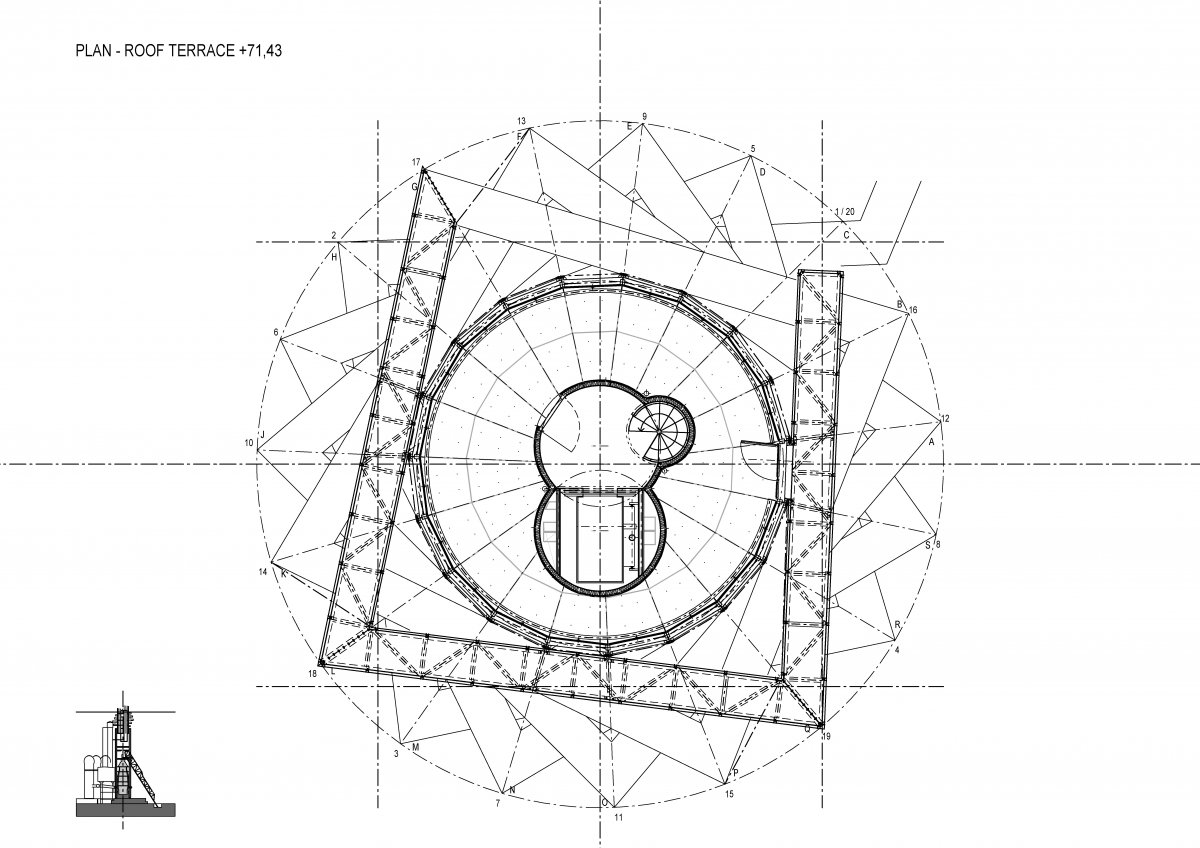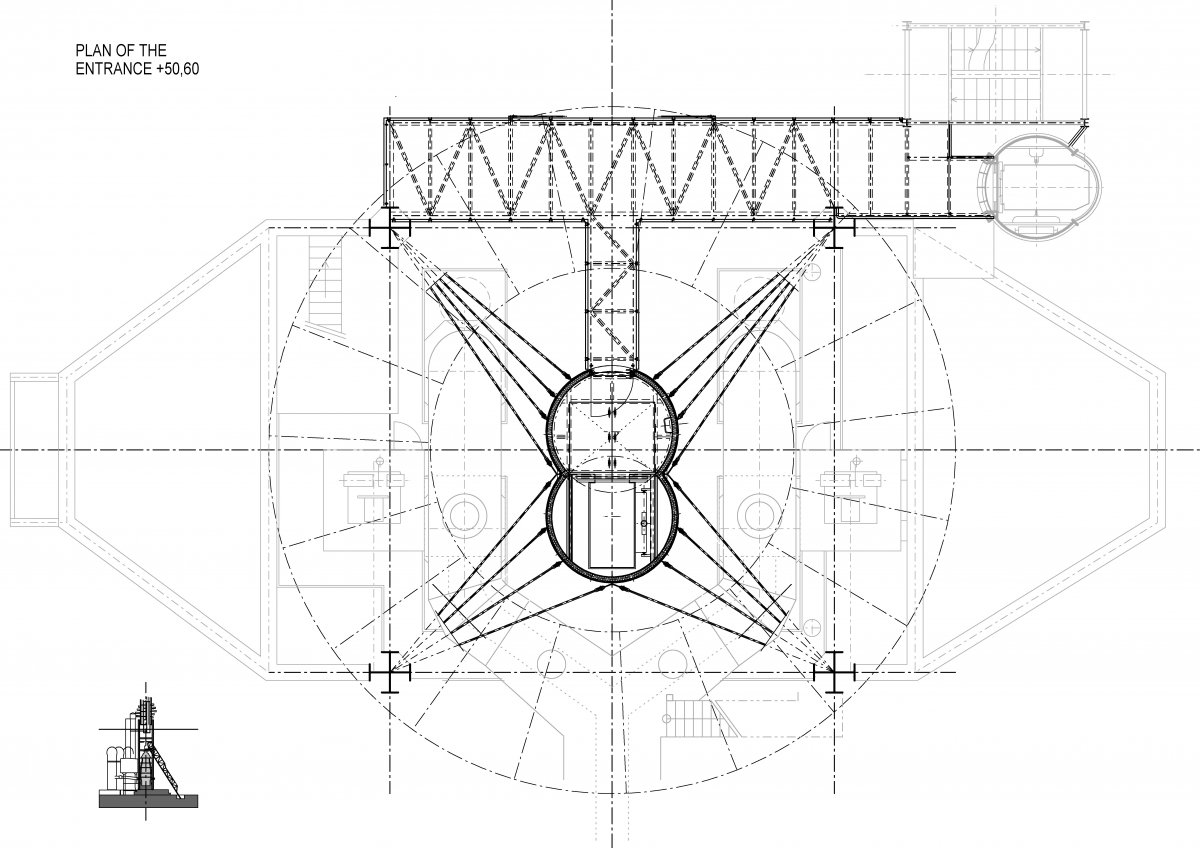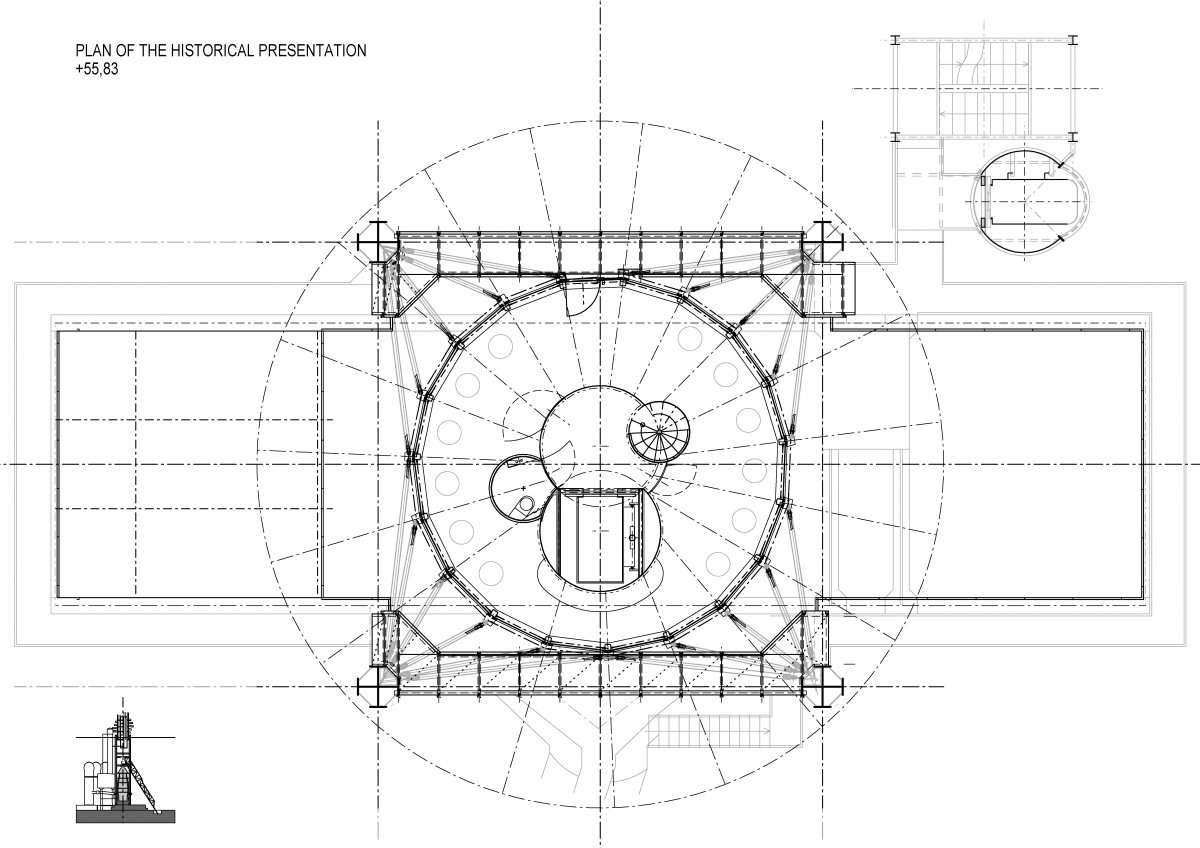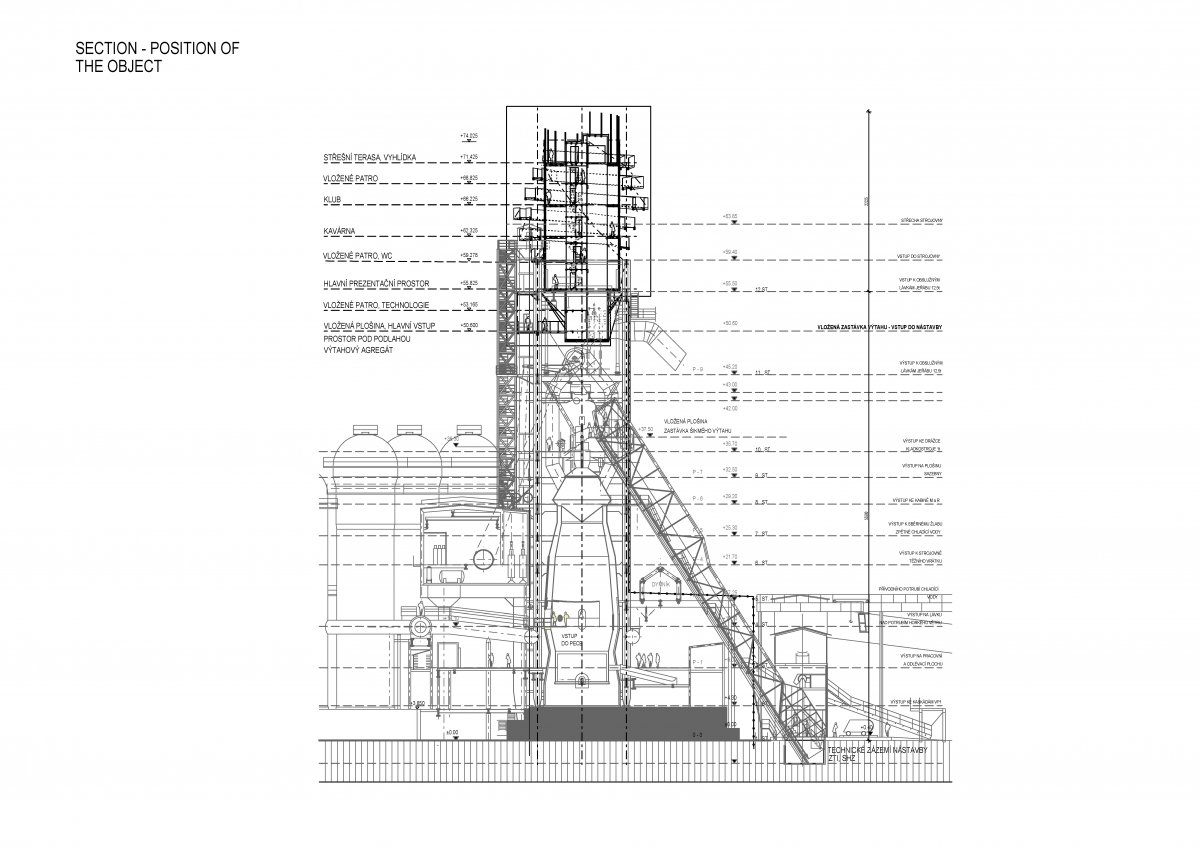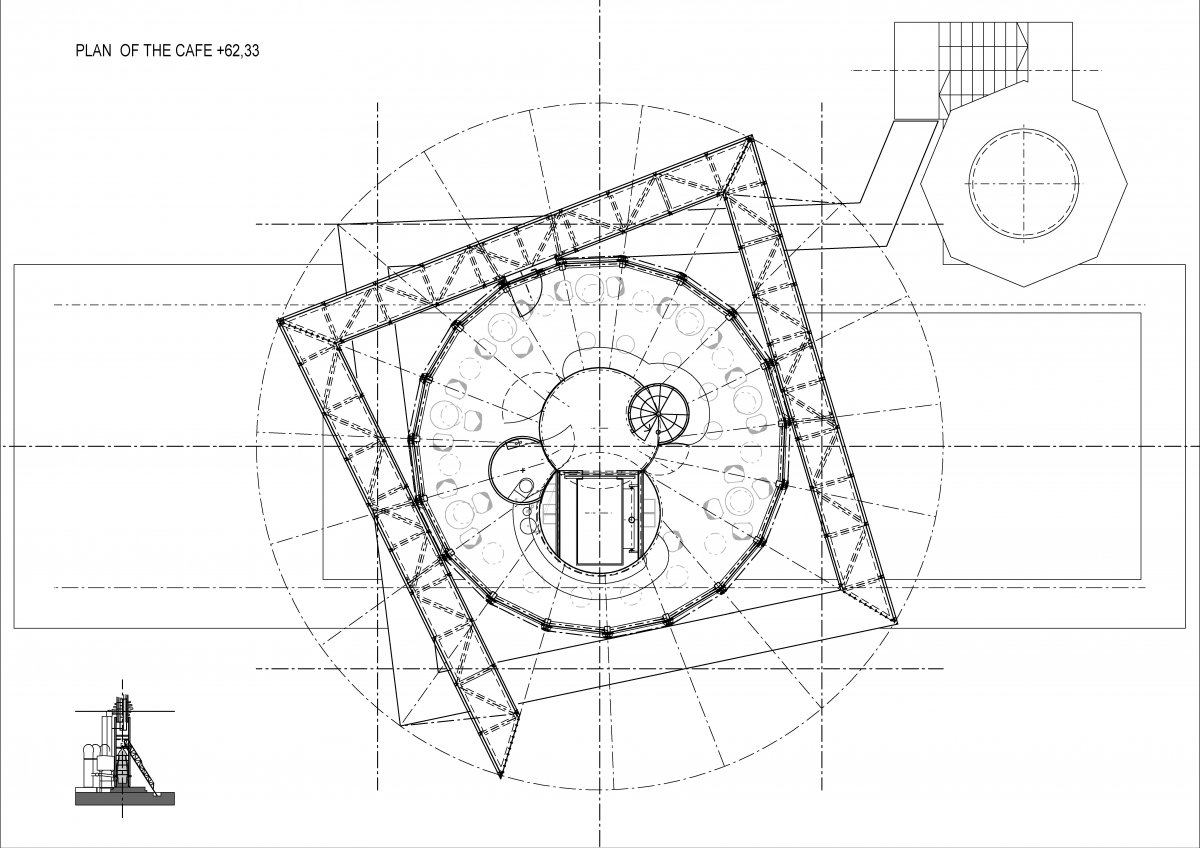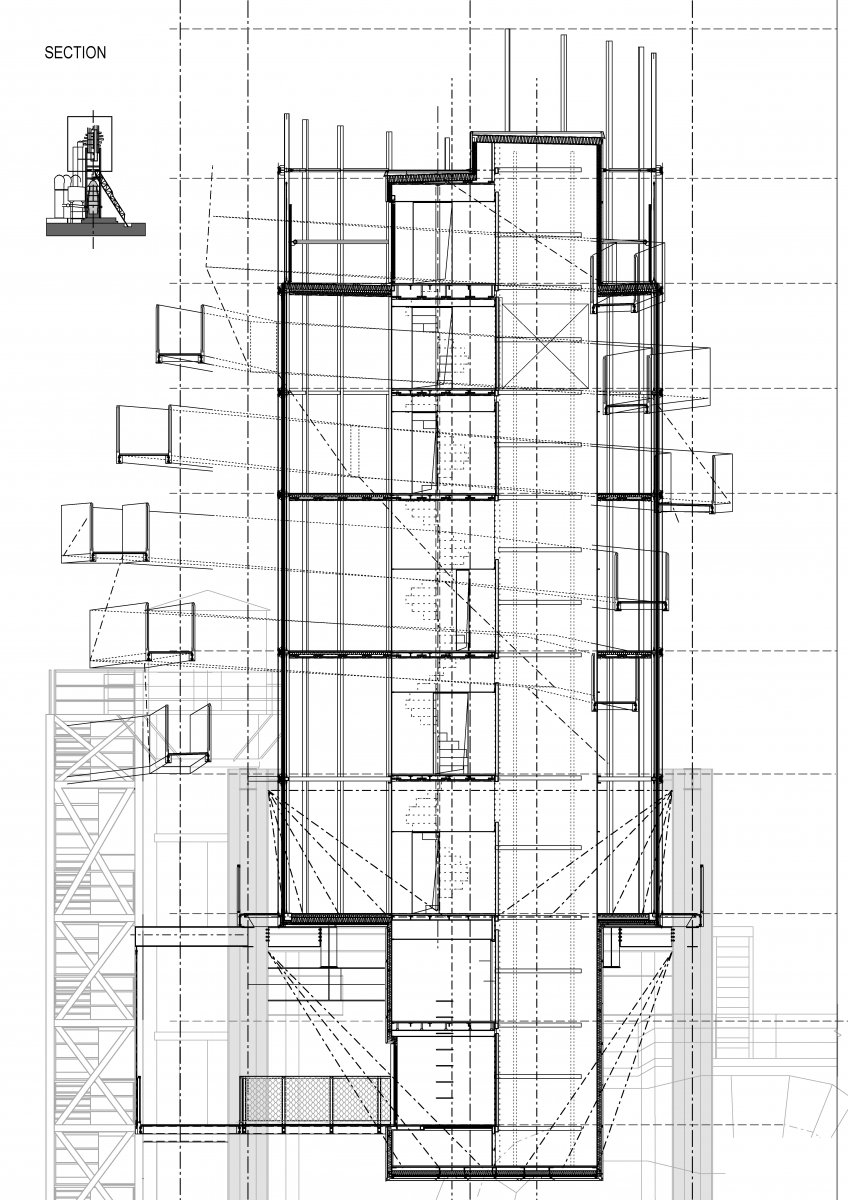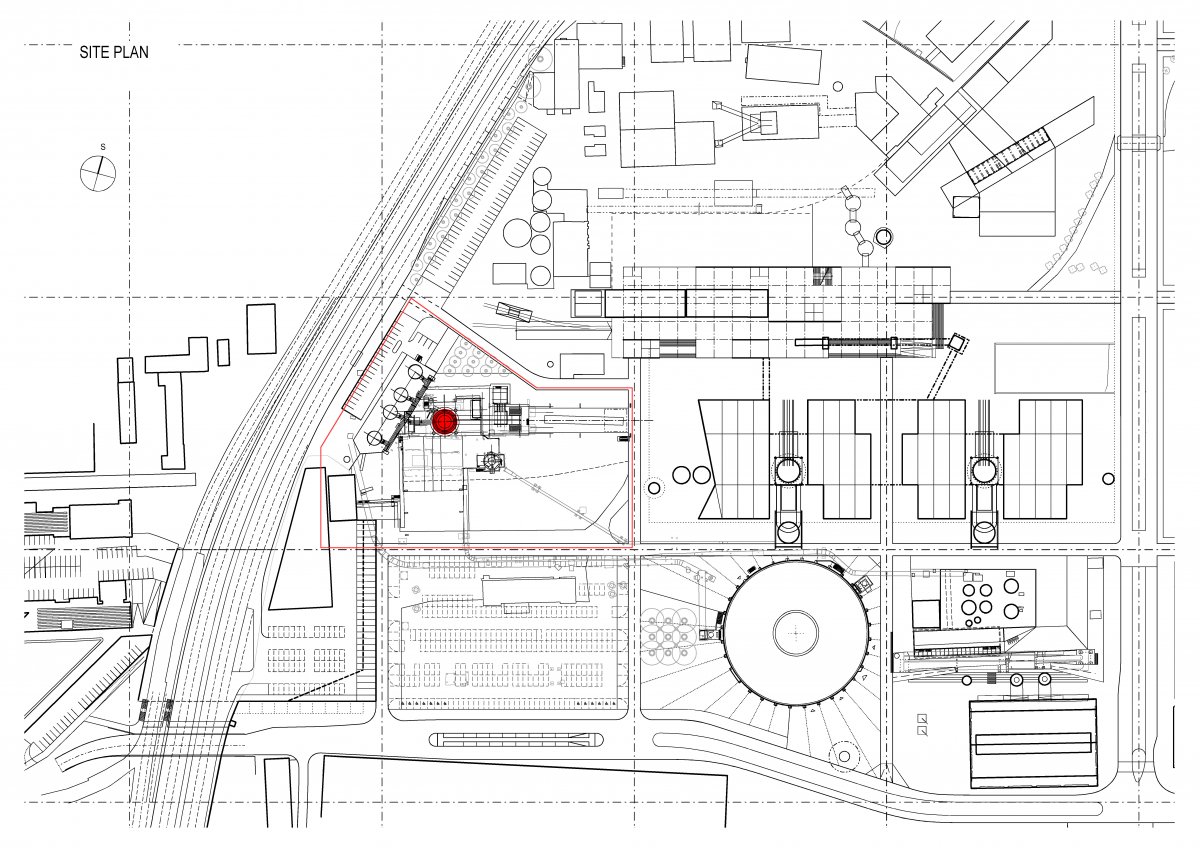Extesion of Blast Furnace No. 1. , Ostrava - Dolní Vítkovice, CZ
The Lower Vítkovice Area, a national cultural monument of industrial heritage, stretches over the territory of ca. 500 x 500 metres. It consists of a collection of buildings of the former Hlubina mine, a 200 m long coking plant and a former metallurgical complex. A new framework programme for the use of the entire site for cultural and educational purposes was agreed on between 2007 and 2009. Its urban and architectural form was defined in 2010. The formerly closed factory site was rebuilt between 2012 and 2016 for the use of the public as an open, vibrant city within the city. New public spaces had been built including streets, squares, public parking lots with new lighting, and a park. In the past four years, important public buildings have also been built or revitalised here. The oldest Blast Furnace No. 1 has been made accessible as a sought-after educational exhibit. Its extension houses a café with a capacity of about 100 seats, a training room and an observation deck. The blast furnace’s control room has been converted into a visitor centre. The blast furnace base is used as an outdoor music venue with optional roofing.
